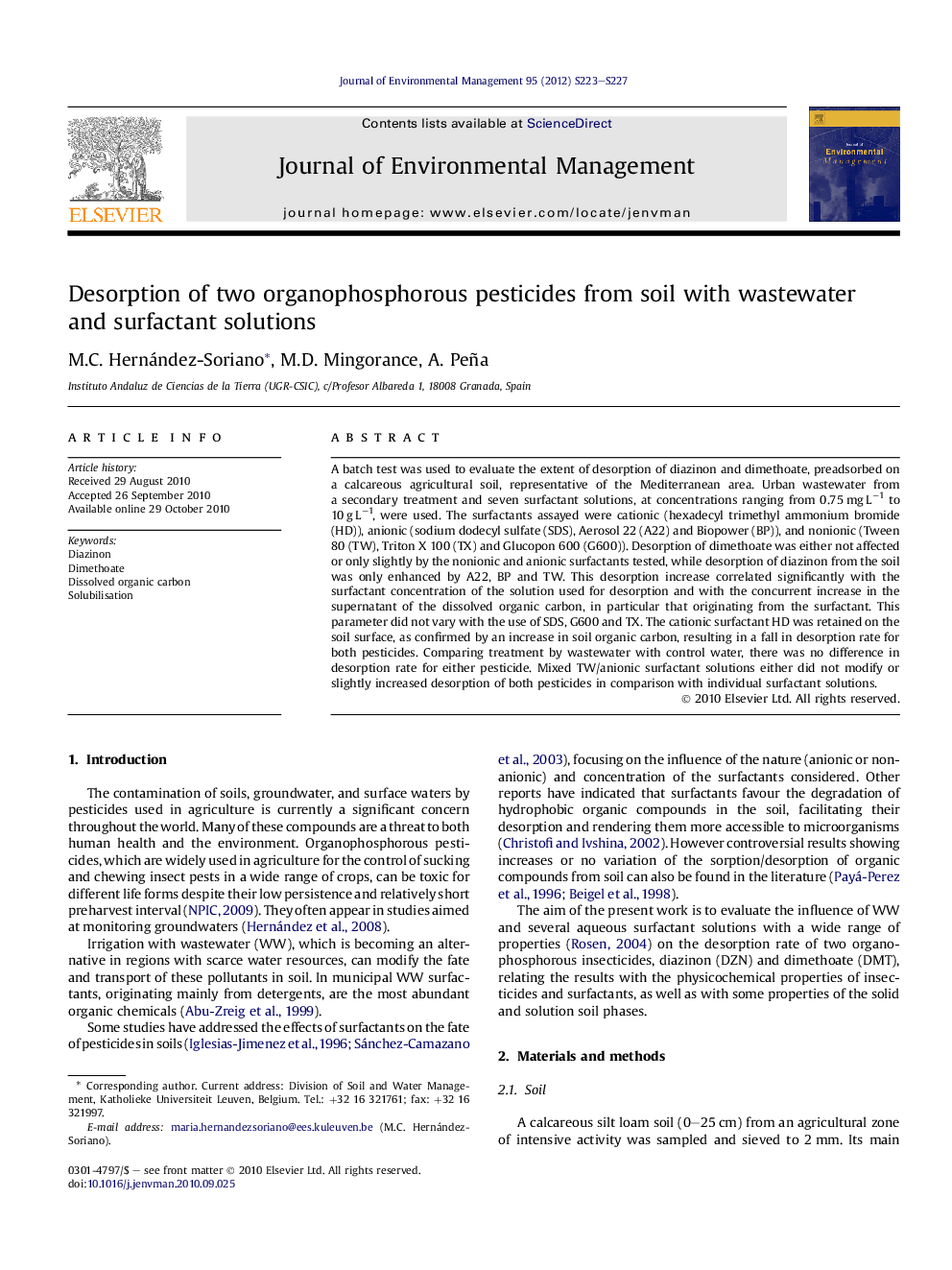| Article ID | Journal | Published Year | Pages | File Type |
|---|---|---|---|---|
| 1057057 | Journal of Environmental Management | 2012 | 5 Pages |
A batch test was used to evaluate the extent of desorption of diazinon and dimethoate, preadsorbed on a calcareous agricultural soil, representative of the Mediterranean area. Urban wastewater from a secondary treatment and seven surfactant solutions, at concentrations ranging from 0.75 mg L−1 to 10 g L−1, were used. The surfactants assayed were cationic (hexadecyl trimethyl ammonium bromide (HD)), anionic (sodium dodecyl sulfate (SDS), Aerosol 22 (A22) and Biopower (BP)), and nonionic (Tween 80 (TW), Triton X 100 (TX) and Glucopon 600 (G600)). Desorption of dimethoate was either not affected or only slightly by the nonionic and anionic surfactants tested, while desorption of diazinon from the soil was only enhanced by A22, BP and TW. This desorption increase correlated significantly with the surfactant concentration of the solution used for desorption and with the concurrent increase in the supernatant of the dissolved organic carbon, in particular that originating from the surfactant. This parameter did not vary with the use of SDS, G600 and TX. The cationic surfactant HD was retained on the soil surface, as confirmed by an increase in soil organic carbon, resulting in a fall in desorption rate for both pesticides. Comparing treatment by wastewater with control water, there was no difference in desorption rate for either pesticide. Mixed TW/anionic surfactant solutions either did not modify or slightly increased desorption of both pesticides in comparison with individual surfactant solutions.
